BALCH SPRINGS — Weeks after the skies opened and dumped 15 inches of rain on his home, Joel Garcia was tearing out drywall on a hot afternoon, a debris pile growing at the curb.
“You should have come before all this and seen how nice my house was,” said Garcia, 34, who owns a remodeling business.
The mud line was 2 feet off the ground, nearly even with a rotting stack of stuffed animals, carpet and clothing on the driveway. A pair of creeks meet nearby and Garcia knew his family lived in a floodplain.
But until Aug. 22, the worst the house had endured in a half-century was 4 inches of seepage.
“The climate’s changed,” Garcia said, idly scratching his back with the hammer he’d been using for demolition. “My grandpa said every 100 years it rains a lot. I don’t know if that’s true anymore. The weather is never going to be the same.”
That’s pretty much what climate scientists say. Extreme weather is coming more often and with greater intensity, and it wouldn’t be this way if not for people.
But some Texas politicians don’t buy it, to the dismay of those feeling the brunt — like those in Balch Springs, where floods came just a month after a rare suburban wildfire that caught national attention.
“Climate change is measured on patterns over years and decades and centuries. There have always been catastrophic weather events,” Sen. Ted Cruz said, adding that efforts to link this summer’s woes to climate change “are far more politics than science.”
“The climate’s always changing. Lake Superior used to be a glacier,” said Rep. Michael Burgess, R-Pilot Point, whose district north of Dallas got a much-needed soaking that night but not a dangerous deluge.
“Most of them will never believe it,” said Rep. Marc Veasey, a Democrat whose district runs from Fort Worth, where he lives, to Oak Cliff near downtown Dallas. “They have their talking points on how they deal with it. And it’s really a shame.”
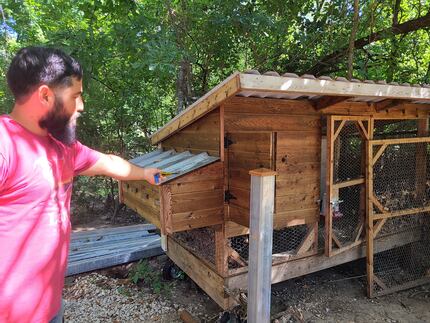
Settled science
The Texas state climatologist, John Nielsen-Gammon, says the science is well settled: The climate is changing at a startling rate. The change entails a host of threats. And it’s not just “natural variation.”
“The impacts of climate change happen suddenly, during extreme events, even though climate change itself is happening gradually,” he said.
The list of such calamities now includes the Balch Springs flood and wildfire, along with much bigger events.
“The higher temperatures allow the ground and plants to dry out faster when you do have a drought,” said Nielsen-Gammon, a professor in the Texas A&M Department of Atmospheric Sciences and director of the Southern Regional Climate Center.
As for the rain, most North Texas counties have recorded one-day records from 9 to 12 inches. For several to get more than a foot in one summer “is indeed exceptional,” he said. “Rainfall like that would be expected to happen on average once every several hundred years, if climate change wasn’t occurring.”
Alas, it is occurring.
Hurricane Harvey dumped an incredible 5 feet of rain on Houston in August 2017.
Across the Southeast over the last 40 years, “we’ve seen roughly an 11% increase in the intensity of the sort of rain that only happens once a century,” and the frequency has doubled for storms of any given magnitude.
That is, a storm that might have dumped 10 inches on Dallas in 1980 would dump 11 inches. That storm is twice as likely. So is a storm that dumps 6 inches.
“If the frequency of extreme rainfall is underestimated, then the size of your floodplain is underestimated also,” Nielsen-Gammon said. Residents are less safe than they thought. Property values drop and insurance rates spike, even if it’s years before the next catastrophe.
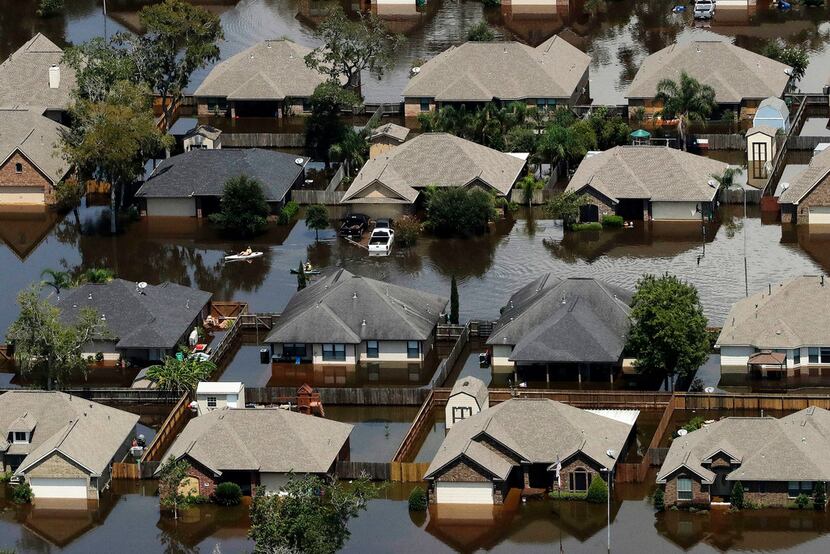
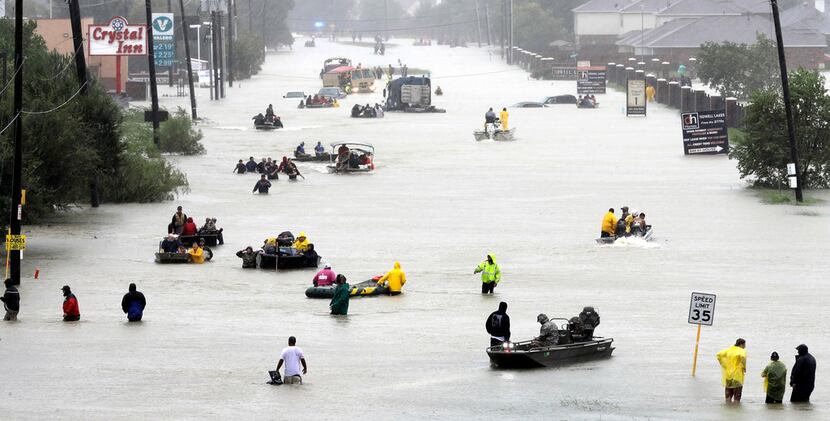
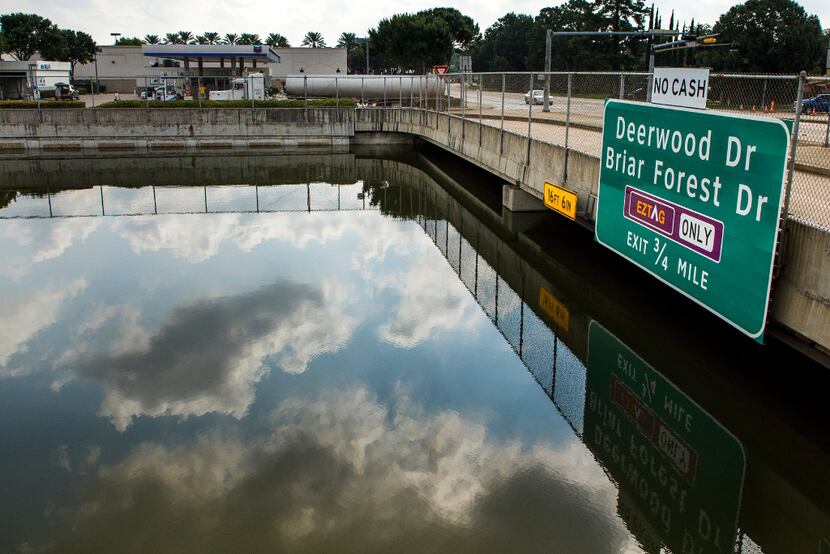
“We’ve basically designed stuff for what normally happens in the range of conditions we have come to expect,” said Nielsen-Gammon — and those record books are becoming obsolete. “In Dallas, a 2-degree increase didn’t matter much in 2017 or 2018 or 2019 or 2020 or 2021. But it contributed to major flooding in 2022.”
‘It was wild’
One of Garcia’s neighbors snapped a chilling photo during the storm: Inside, the water comes to the top of a bed. Outside, held back somehow by a window, it’s a foot and a half higher.
Before the water rose, Garcia spent an hour moving tools and other valuables to high shelves. Around 1:30 a.m., he woke his wife Marcela so she could gather documents and their kids, ages 13, 6, and 5 months.
By then the creek out back was raging. The water reached his knees as he waded across the submerged gravel driveway.
The Garcias made their escape in a Ram 3500, the water nearly as high as the tires. At the low spot where the driveway meets the road, rushing water lapped at the truck’s windshield.
“There’s no question” this isn’t normal, Garcia said.
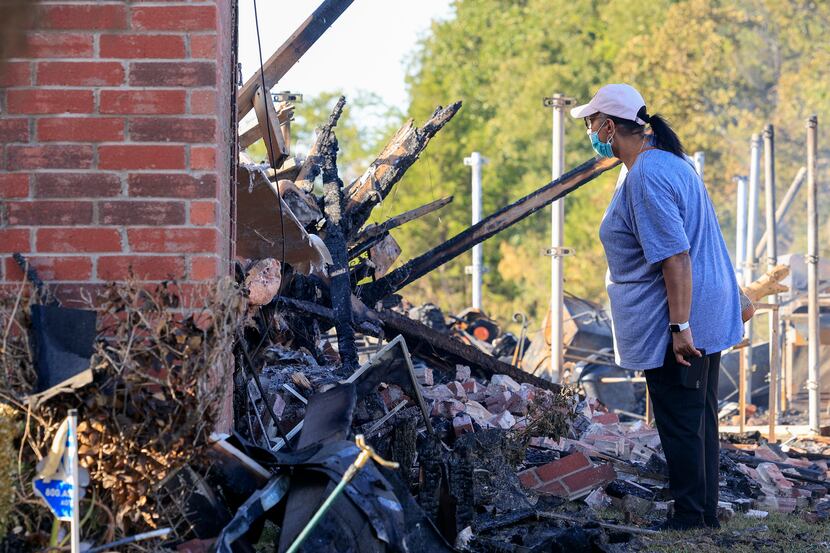
A mile away on higher ground, the Edwards family’s 9-inch rain gauge overflowed that night. The flood knocked out power for days and turned the yard into a deep pond.
“We had floating trampolines. It was wild,” said Michelle Edwards, 44, an accountant at a Dallas homeless shelter.
The wildfire a mile away had sent embers onto the field across the road. Her mom got out a hose to wet down their house. In the February 2021 winter storm, Edwards’ husband, an electrician, rigged a generator for her 85-year-old grandmother’s house next door where they kept warm until power was restored after 14 days.
After all these catastrophes, Edwards can’t fathom the refusal to acknowledge that climate change is real.
“They’re crazy,” she said. “And I’m a Republican. I don’t know if it’s money, if it’s not being educated, not seeing the physical changes that are happening everywhere.”
‘Climate alarmists’
Nine days before the torrent, the local U.S. House member — Rep. Lance Gooden, R-Terrell — blasted Democrats for devoting federal funds to climate change, calling it a low priority.
He ignored requests to discuss his views. But during his 2018 campaign, Gooden told The Dallas Morning News that “I don’t deny the conclusions of the scientific community, but I take issue with those who claim to have all the answers. Climate science is imprecise and so are the consequences of any legislative action we take to address the issue.”
Rep. Chip Roy, R-Austin, recently denounced “climate tyranny” by those who seek to reduce the use of fossil fuels.
“Climate alarmists have a political ideology to promote, and facts can’t get in the way,” Cruz tweeted earlier this month, highlighting NASA data that showed average temperatures in the lower atmosphere last month were about the same as in August 1998.
NASA itself has a different take.
Its Global Climate Change dashboard spotlights the 4-inch rise in sea level since 1993; shrinkage of 13% per decade of Arctic ice; and the huge spike in carbon dioxide, a heat-trapping greenhouse gas that comes from burning fossil fuels.
Since the industrial age began in the mid-1700s, NASA says, “human activities have raised atmospheric CO2 by 50%” — a bigger spike than 20,000 years ago at the end of the last ice age.
During his run for the 2016 presidential nomination, Cruz used subcommittee hearings he chaired to promote climate skepticism.
At one hearing, he sparred with the president of the Sierra Club, contending that climate change was bunk because satellite data showed an 18-year pause in global warming. (Climate scientists chided him for ignoring lots of other metrics.)
If the GOP wins back the Senate in November, Cruz expects to chair the full Commerce Committee and will use the perch to push the same views. “I have every intention to be a vigorous chairman, advocating for jobs and prosperity of 30 million Texans,” he said.
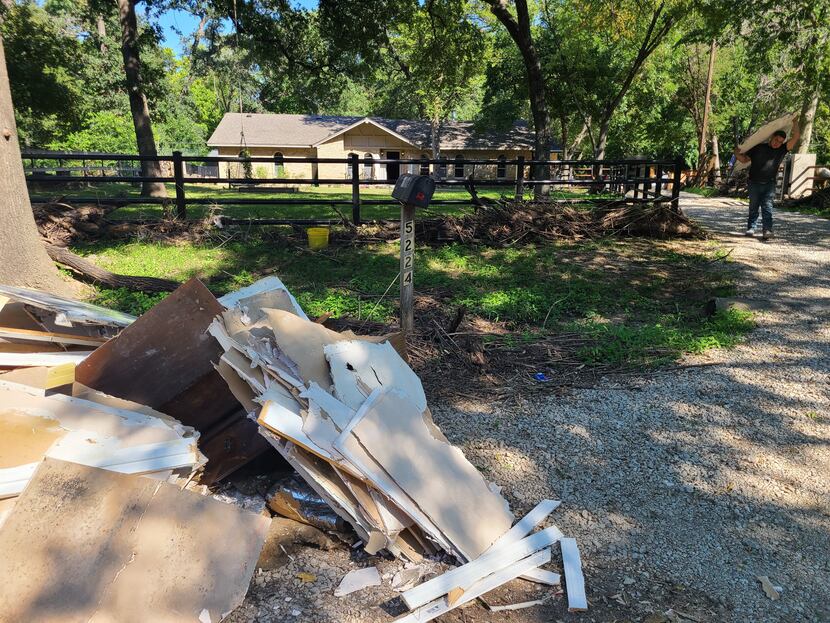
‘Who cares about the cause?’
Still, like many conservatives, Cruz adopts the language of climate alarmists.
Cutting emissions isn’t his own top priority. But “if you care about climate change,” he said, “the single most positive factor for reducing CO2 emissions in modern history has been the shale revolution in Texas.”
Yet, he said, “The Biden administration ironically is doing everything they can to cripple U.S. natural gas production.”
Burgess and others likewise finesse the issue by embracing a shift toward wind, solar and other cleaner energy sources while shrugging off the human origins of climate change.
“I fundamentally disagree,” Burgess said of that scientific judgment, adding that, in any case, “I’m just not sure how relevant that is. … Could there be a human component to it? Yes, there could. I personally don’t believe it is large. But if there is, and there are things we can do better, we should always want to do things better.”
Months after Hurricane Harvey, the Trump administration’s National Climate Assessment pinned at least part of the destruction on “human-induced climate change.”
Rep. Randy Weber, R-Friendswood, whose Houston-area district was hit hard, readily agrees that “greenhouse gases are the enemy.” He just isn’t convinced about the “human-induced” part.
“How’d they have the ice age before men and industrialization?” he said. “Is it cyclical? How much is manmade?”
“I owned an air-conditioning company for 35 years. We always loved it when it got real hot or real cold,” Weber said. “Climate change is real. … Who cares about the cause?”
Democrats want people and nations to accept responsibility so they’ll also take action.
At a hearing Tuesday on polar warming, Dallas Rep. Eddie Bernice Johnson noted the link researchers have drawn between dramatic changes in the Arctic and Texas’ winter storm last year, along with western wildfires and other extreme weather across the country.
“Inaction is really not an option,” Johnson, who chairs the House science committee, said at the United Nations climate conference in Scotland last November.
‘Stuck in their beliefs’
Up the road from Edwards, Cecil Harrison, 69, recalled the ferocity of the storm.
“I’ve been here about 34 years. That’s the first time I’ve seen that much rain,” said the retired builder. “You can’t play around with Mother Nature.”
The July 25 wildfire was a mile away.
Dry grass had reached 6 feet in a vacant lot between Interstate 20 and a neighborhood of brick homes and shiny late-model cars. After weeks of drought, it was kindling. The owner hired a contractor to mow. A spark set off an inferno that scorched 26 homes, destroying a dozen.
“It was terrible,” recalled Schneta Antwine, 39, a retail manager who lives across the street from the row of burned-out hulks, where the heat melted recycling bins into shapeless mounds of plastic.
“I’ve never seen fire like this,” she said.
To anyone who denies these extreme events are unnatural, she said, “They’re not out here living on this street. ... A lot of the Congress, they’re a lot older than we are. They’re stuck in their beliefs. Things didn’t happen like this when they were coming up.”

